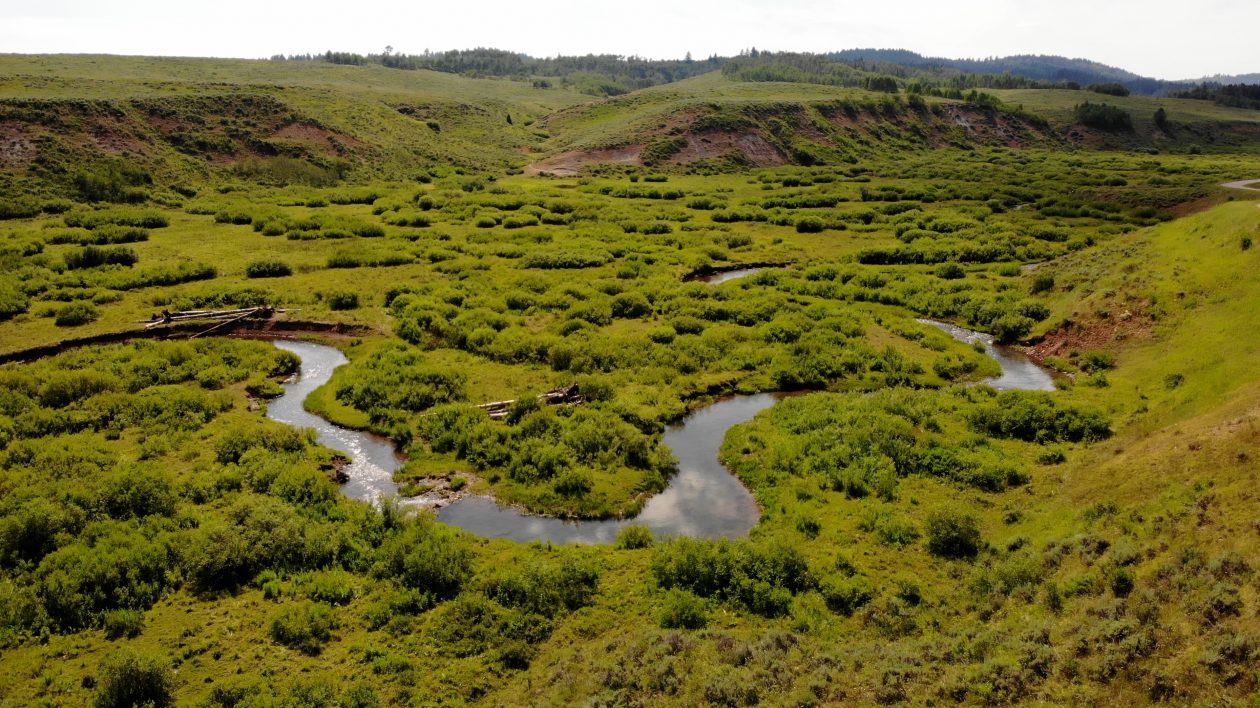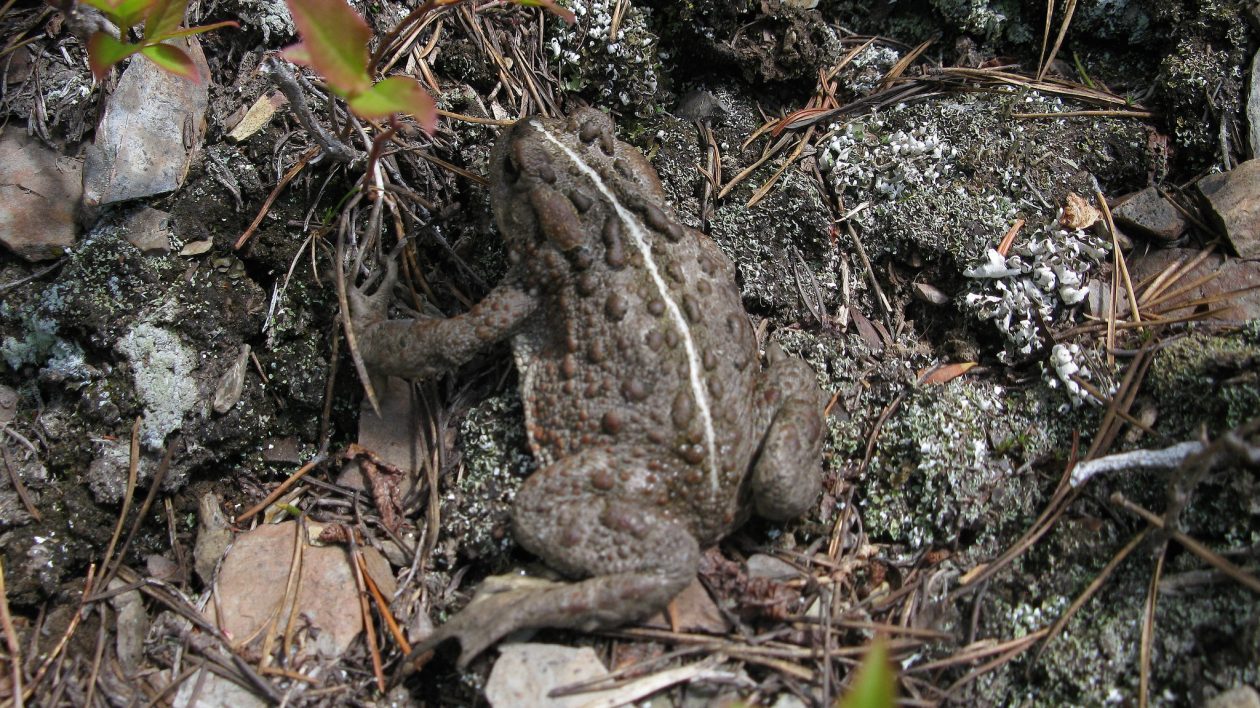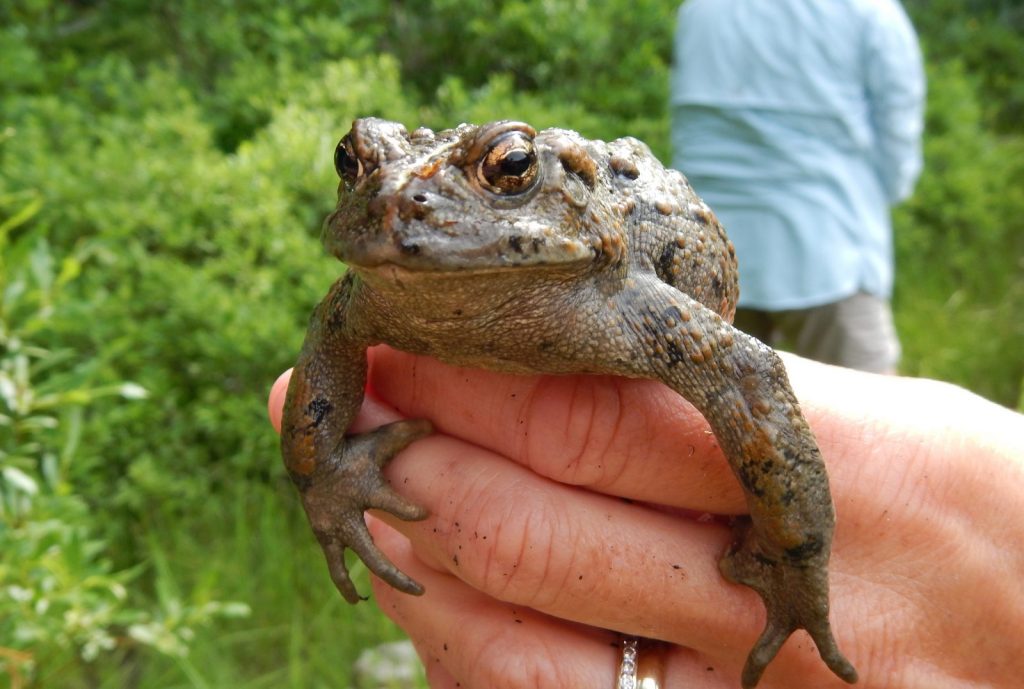It’s 100 degrees. No shade. Some water. I’m sitting in it as deep as chest waders allow. I’m waiting on a mussel. When it moves, slow as it does, I’ll shoot footage of the shell opening to collect the buffet floating by. This takes patience. Something the skittering crawdad to the right of me doesn’t have, but the fisheries biologist looking for life rippling through this shin-deep water does.
“There’s a bunch of species here that we don’t have everywhere,” says Lee Mabey, Caribou Targhee National Forest fisheries biologist. “That makes this kind of unique.”
He’s upstream of me in Tincup Creek. It’s in Southeastern Idaho. U.S. Forest Service and Trout Unlimited are leading a multi-group, multi-year effort to rebuild Tincup for several unique animals including native Yellowstone cutthroat trout, northern leatherside chubs and boreal toads, an amphibian with a signature white stripe.
Boreal toads are a subspecies of Western toad (Bufo boreas). It lives in wet habitats, often at high altitudes.
“Lee makes a pond and the next year it has boreal toads in it,” says Cynthia Tait, U.S. Forest Service Intermountain Region regional aquatic ecologist. “Idaho and northern Utah are doing nicely, but not southern Utah and Colorado.”

Colorado’s boreal toads are barely making it with portions of the population blinking out permanently. Disease is the first conclusion, but here’s the thing: boreal toads in the northern Rocky Mountains have the same disease toads in the southern end of the range have. Chytrid fungus. A deadly, skin-clinging disease that turns boreal bellies red. Their hops slow, then stop altogether. If they’re flipped belly side up, they can’t flip back over.
“It’s a sad day when we find a toad like that,” says Sarah Corey-Rivas, associate professor at New Mexico Highlands University Department of Biology. “There’s something disturbing about what’s happening in Colorado. We don’t understand why Utah is shining and Colorado is going down the drain.”
Boreal Toad Bellies
Corey-Rivas is working on the why. She started swabbing boreal toad bellies in 2014. She’s studied thousands of samples from infected amphibians, but the fungus is fickle. Growing it in the lab is a shot in the dark. This year, that obstacle toppled. New genome research for other scientific targets is jumping into toad study. Corey-Rivas doesn’t have to grow the fungus in a petri dish anymore to decode genomes. The swab samples collected in the field provide usable genetic information.
The reveal: Colorado boreal toads have major changes in gene expression. Something is wrong with their ability to fight disease.
“The disease is everywhere and it’s spreading,” she says. “We can’t control that. What this is about is management of opportunity in corridors of gene flow. If we know where the isolated pockets of better outlook are, we can help facilitate movement to nearest neighbor.”
Chance Broderius monitors the nearest neighbor in northern Utah where infected toads don’t die. Populations are sick, but stable. He’s tagged a few thousand toads — tracking movements, motivation for movement and what the landscape looks like during movement. He sees surprises annually.
In 2013, a toad trapped in wildfire hopped three miles during the month of the burn presumably looking for water. And tagged toads live long. Up to 15 years instead of the always assumed 5-to-6 years.

“It was very surprising,” says Broderius, Utah Department of Natural Resources native aquatic biologist. “A creature that small exposed to so many threats, diseases, drought and predators makes it. Most other creatures that size max out at a couple of years, but these guys have couple-of-decades potential.”
Harry Crockett would be happy with a couple of years. He’s not even getting that with the boreal toads he studies in Colorado. He’s the native aquatic species coordinator for Colorado Parks and Wildlife. He’s also chair of the Southern Rocky Mountain Conservation of Boreal Toads Team. The team formed in 1990, before genetics research and serious toad science. They noticed a decline in a common hopper species that wasn’t being studied. Then they realized that common hopper, the boreal toad, wasn’t so common anymore.
“I just don’t consider it acceptable on our watch,” Crockett says. “It bugs me a lot. For a species with no federal status, it’s the one we’ve worked on the most.”
Purple Rain for Boreal Toads
Project Purple Rain, released in 2016, encourages Crockett. Purple Rain, named after legendary artist Prince and playing on the color purple bacteria utilized in the project, brightens the toad’s future. Rubbing this native probiotic bacteria on the bellies of boreals increases their chance of surviving the deadly fungus by 40 percent in the lab. Manually applying bacteria in the field is a challenge, but the concept still holds promise. As does the continued dissection of genetics gathered from swabbed bellies instead of grown in petri dishes.
“There are amphibian declines due to chytrid on every continent where there’s amphibians,” Crockett says. “I can’t imagine, with all the effort being thrown at this, we’ll be in the same situation 10 years from now. I just get the feeling we’re close to turning some corner, but maybe that’s me being optimistic.”




Join the Discussion